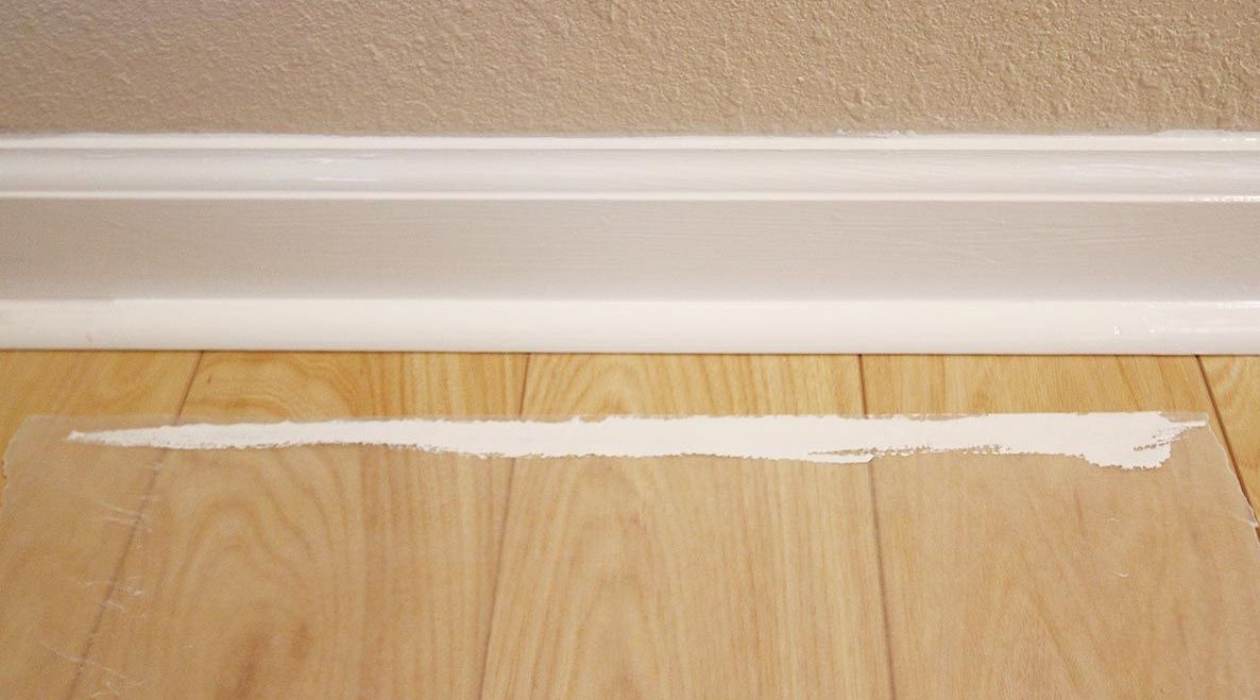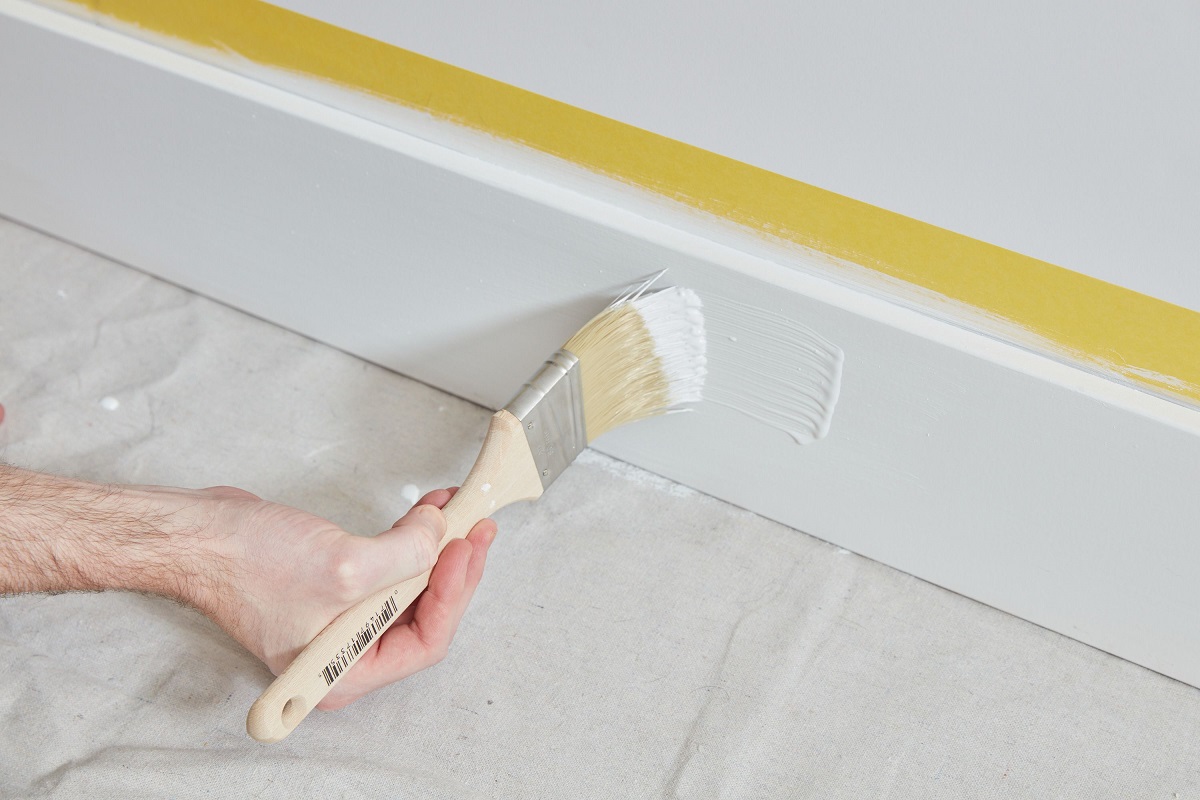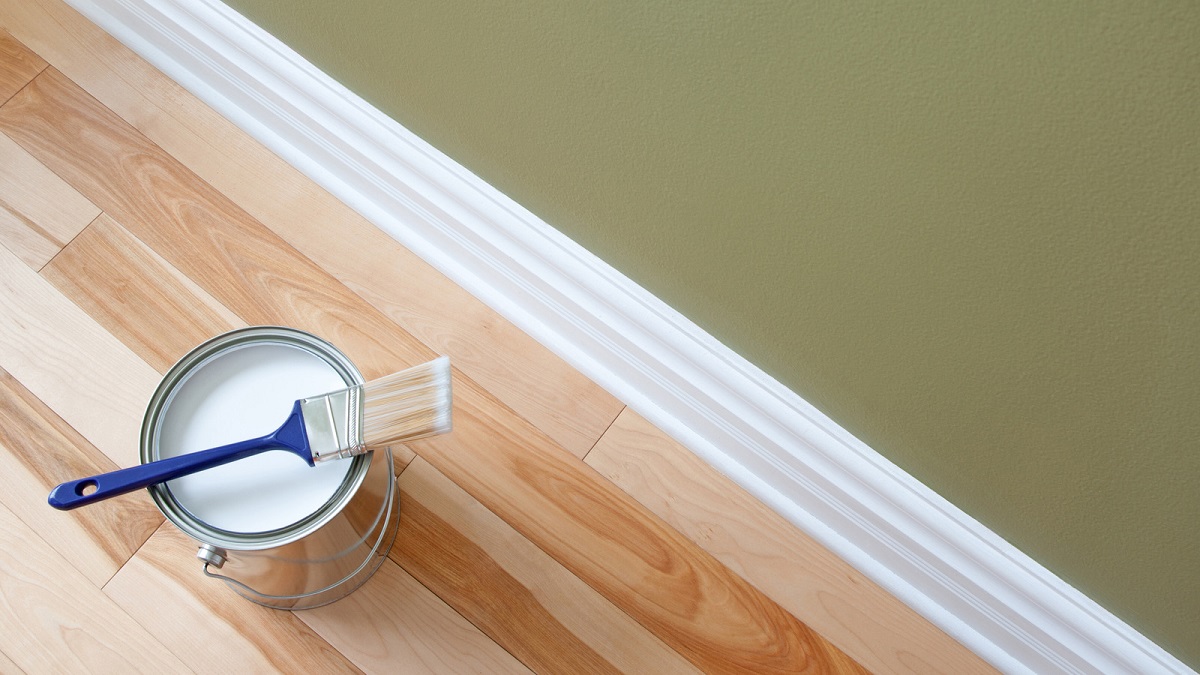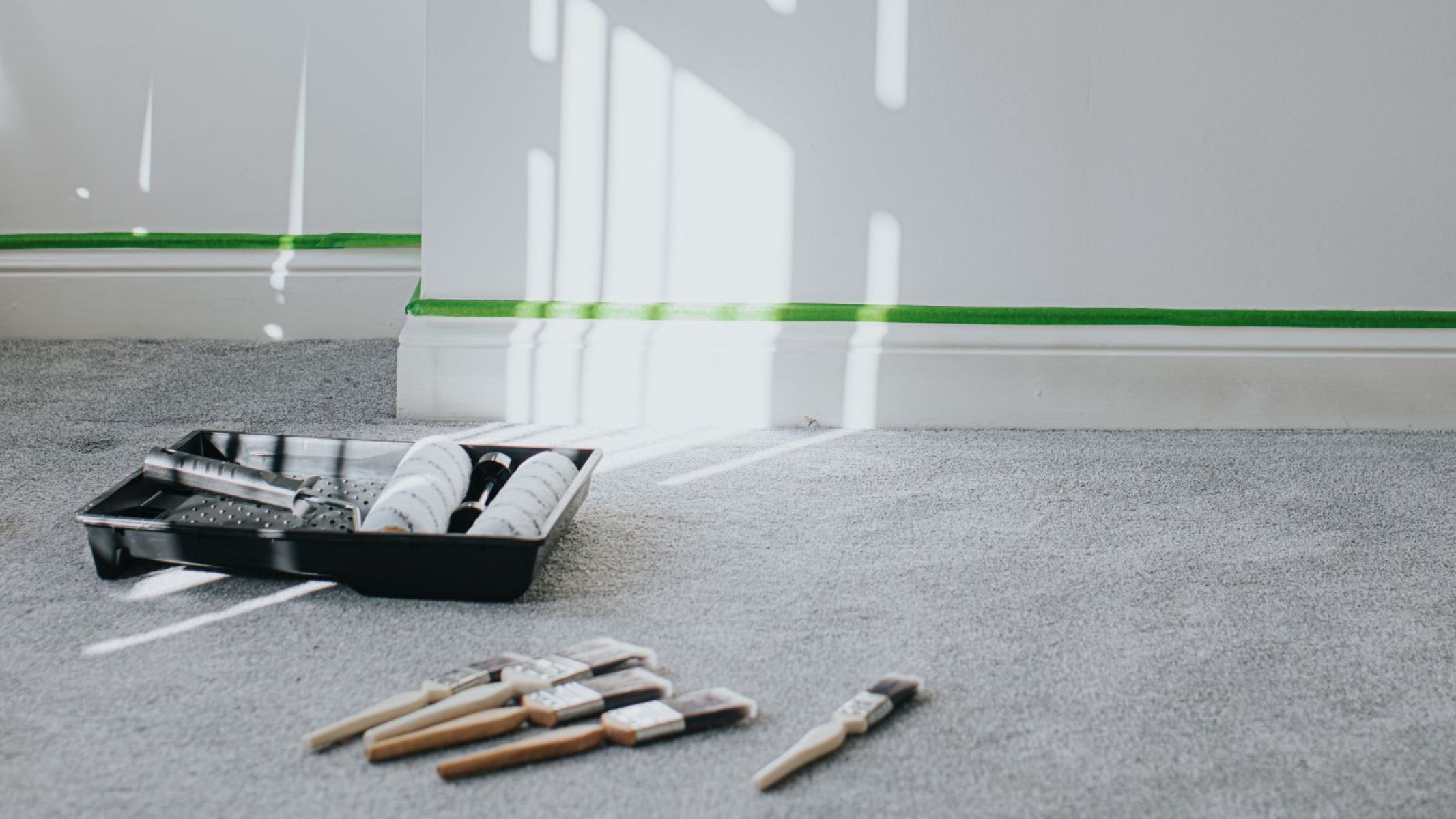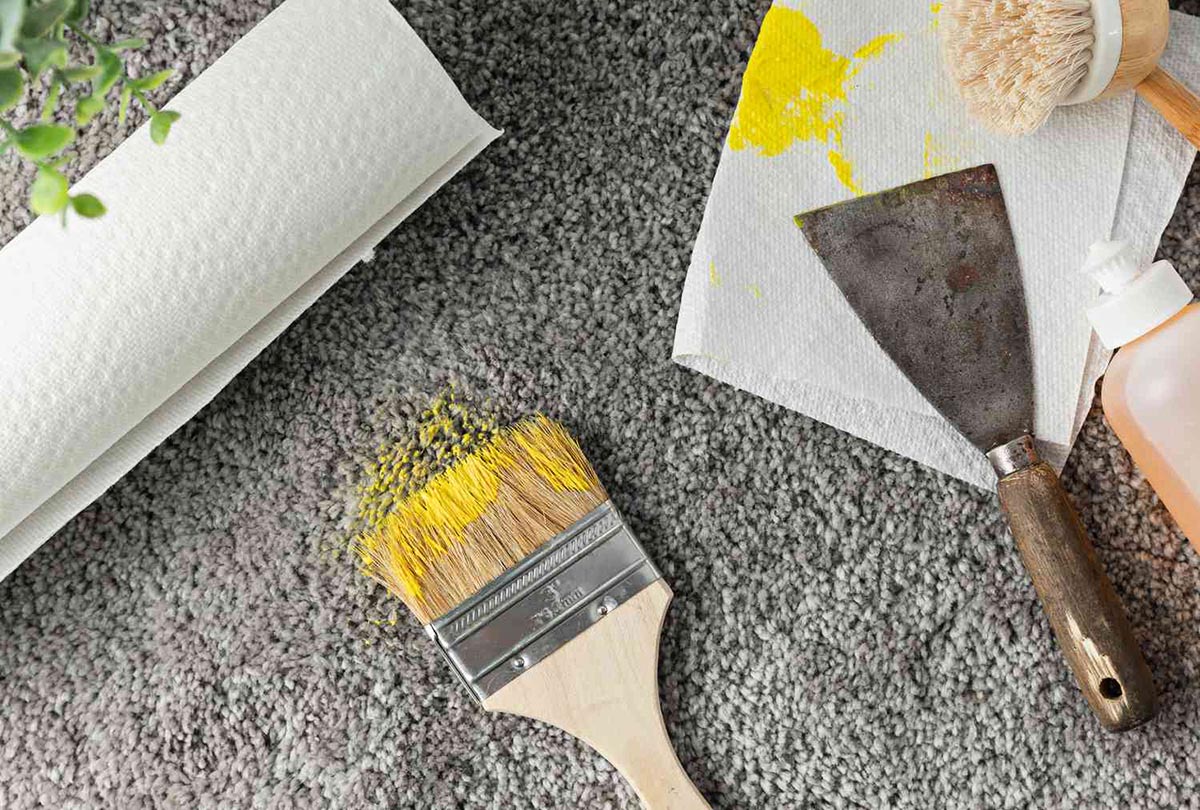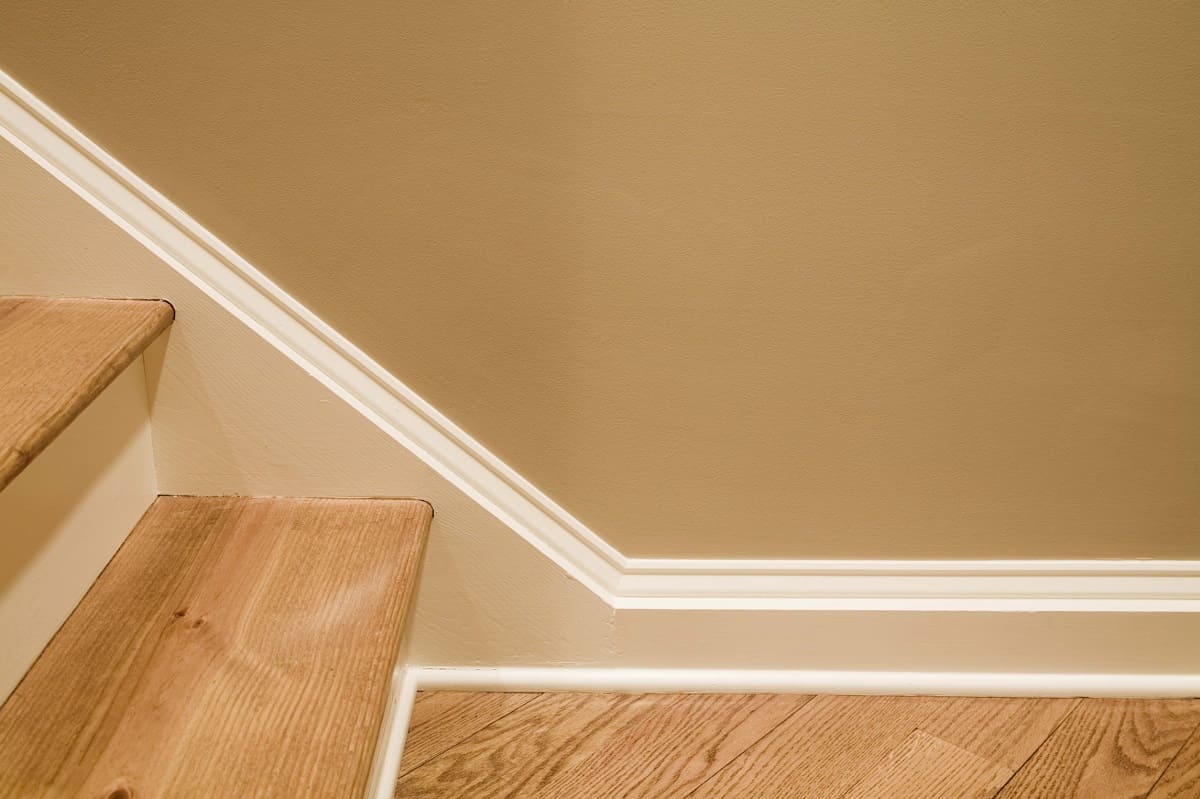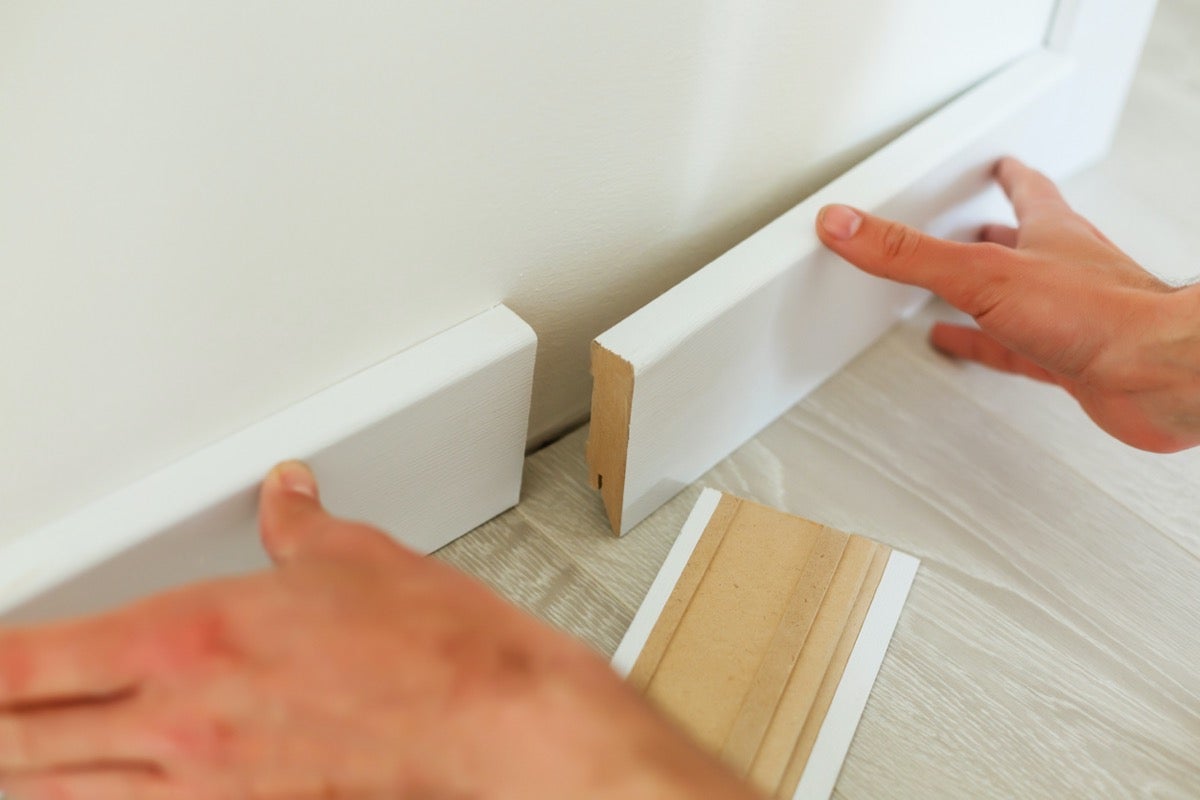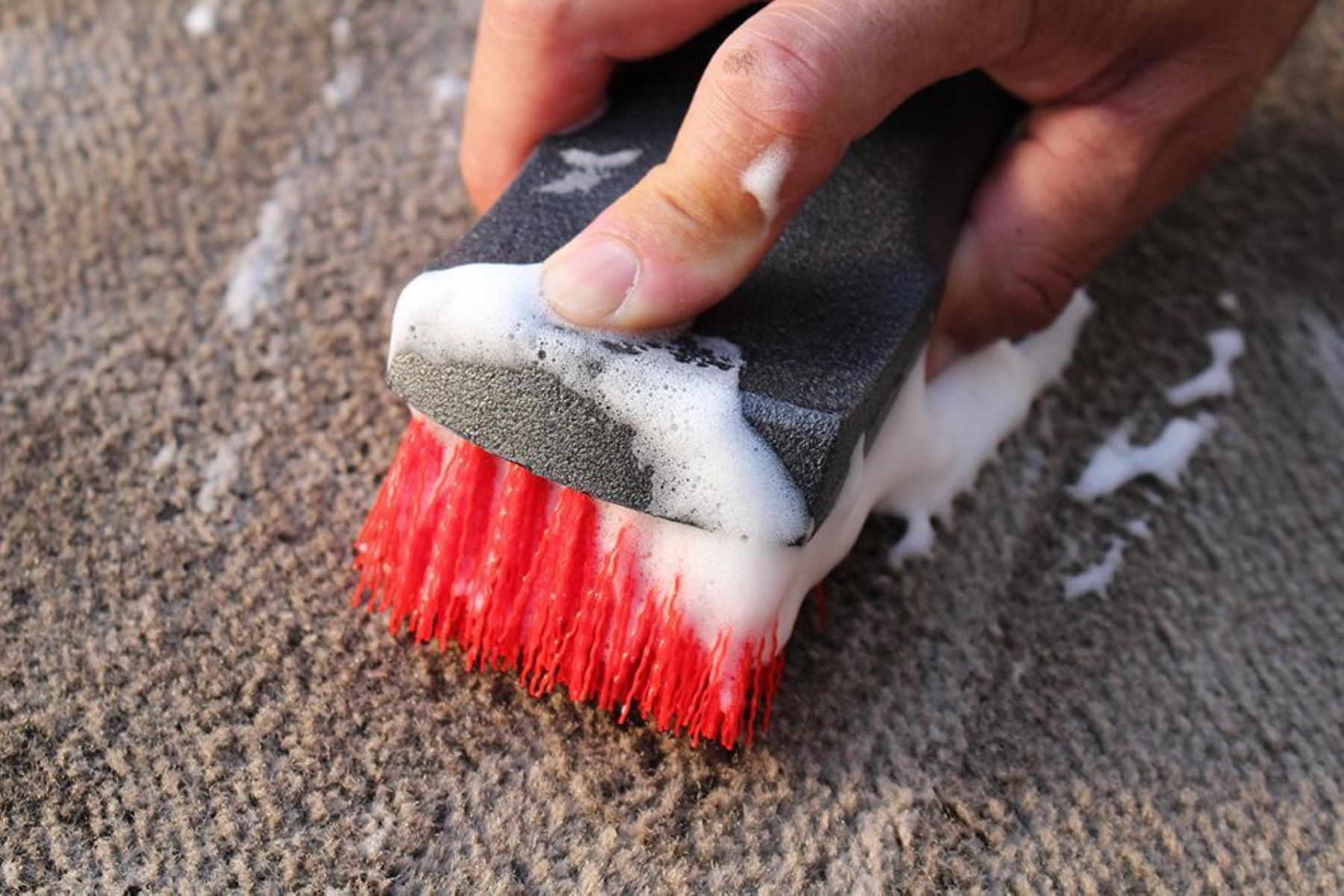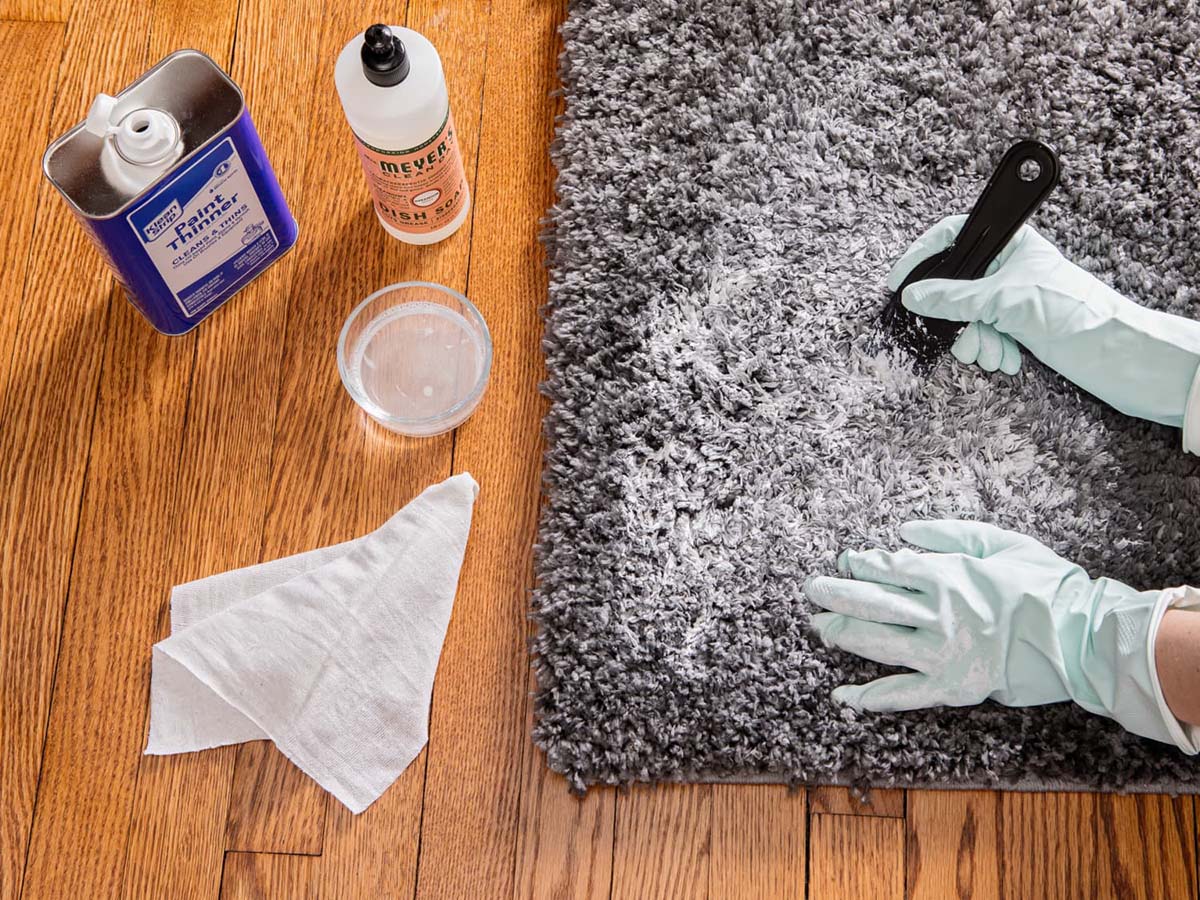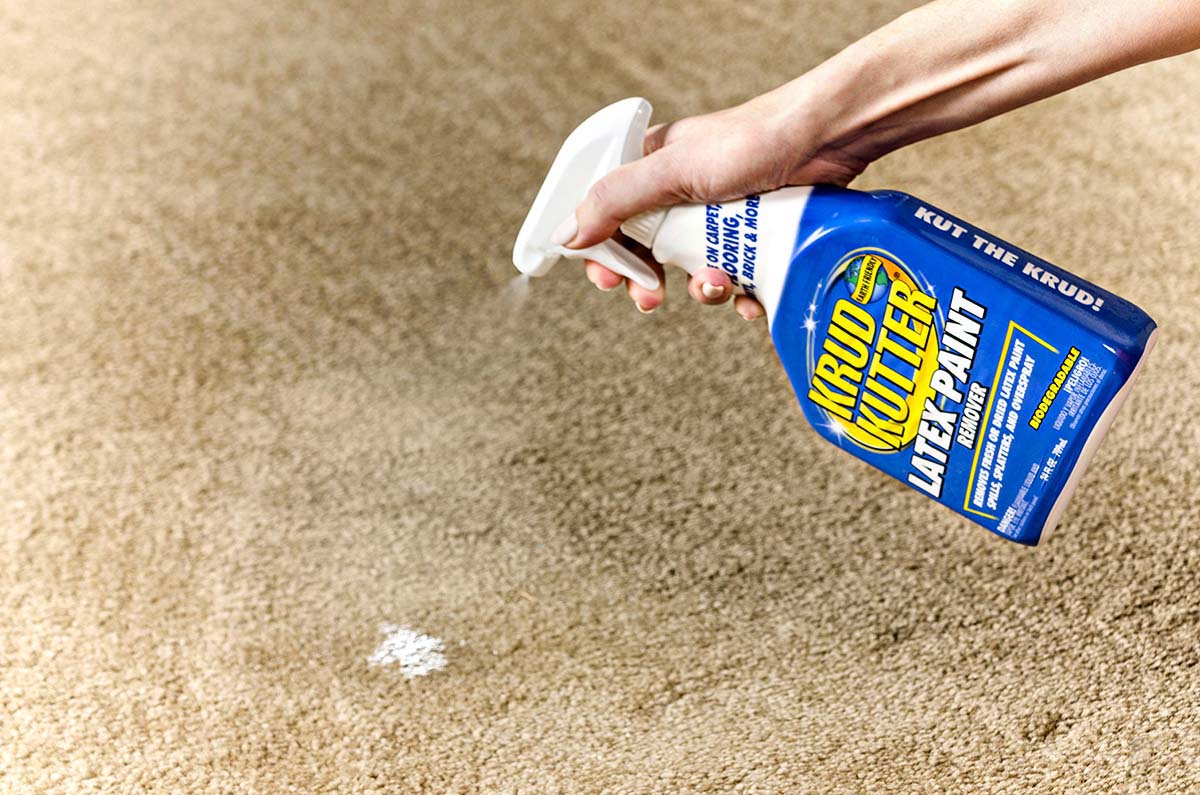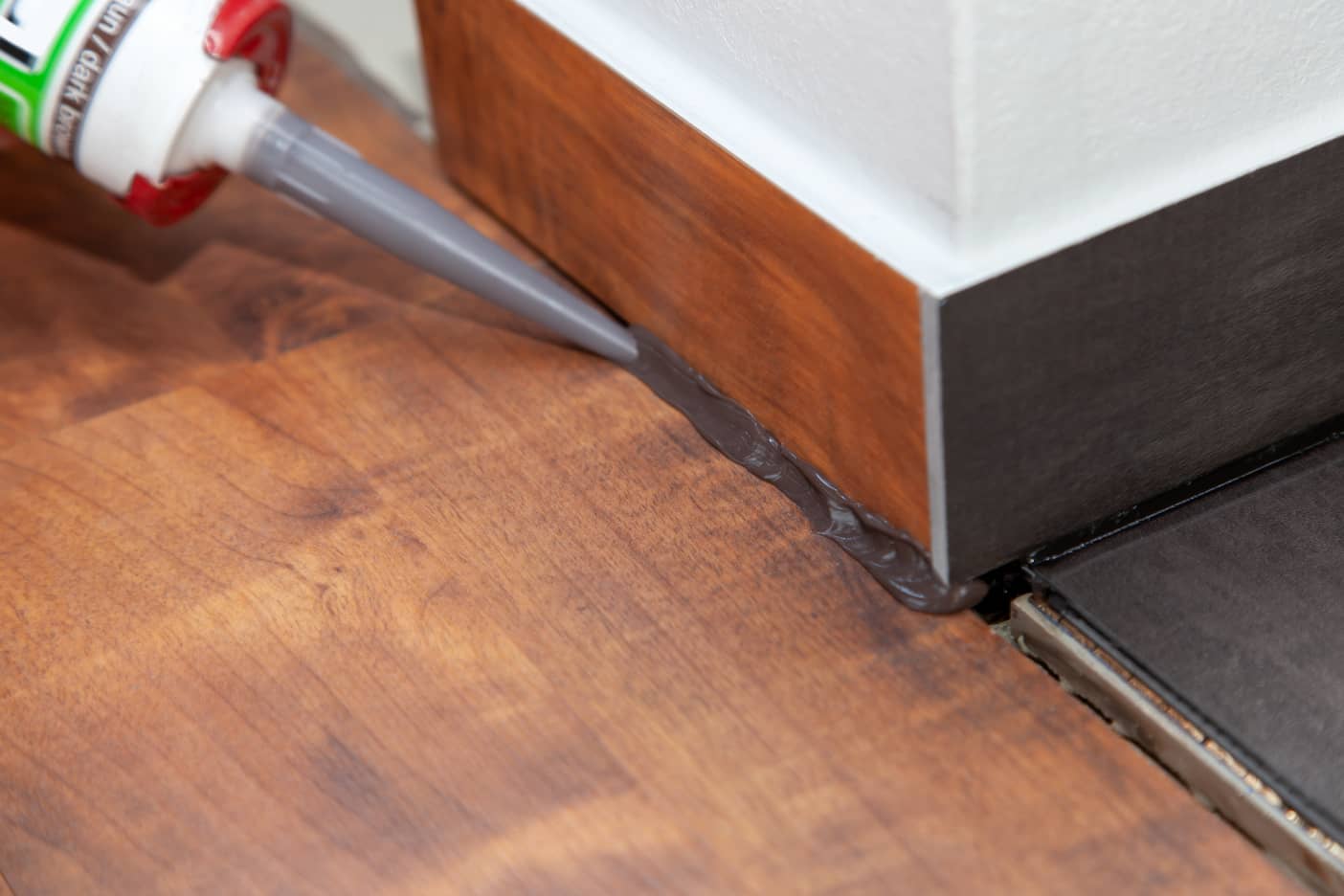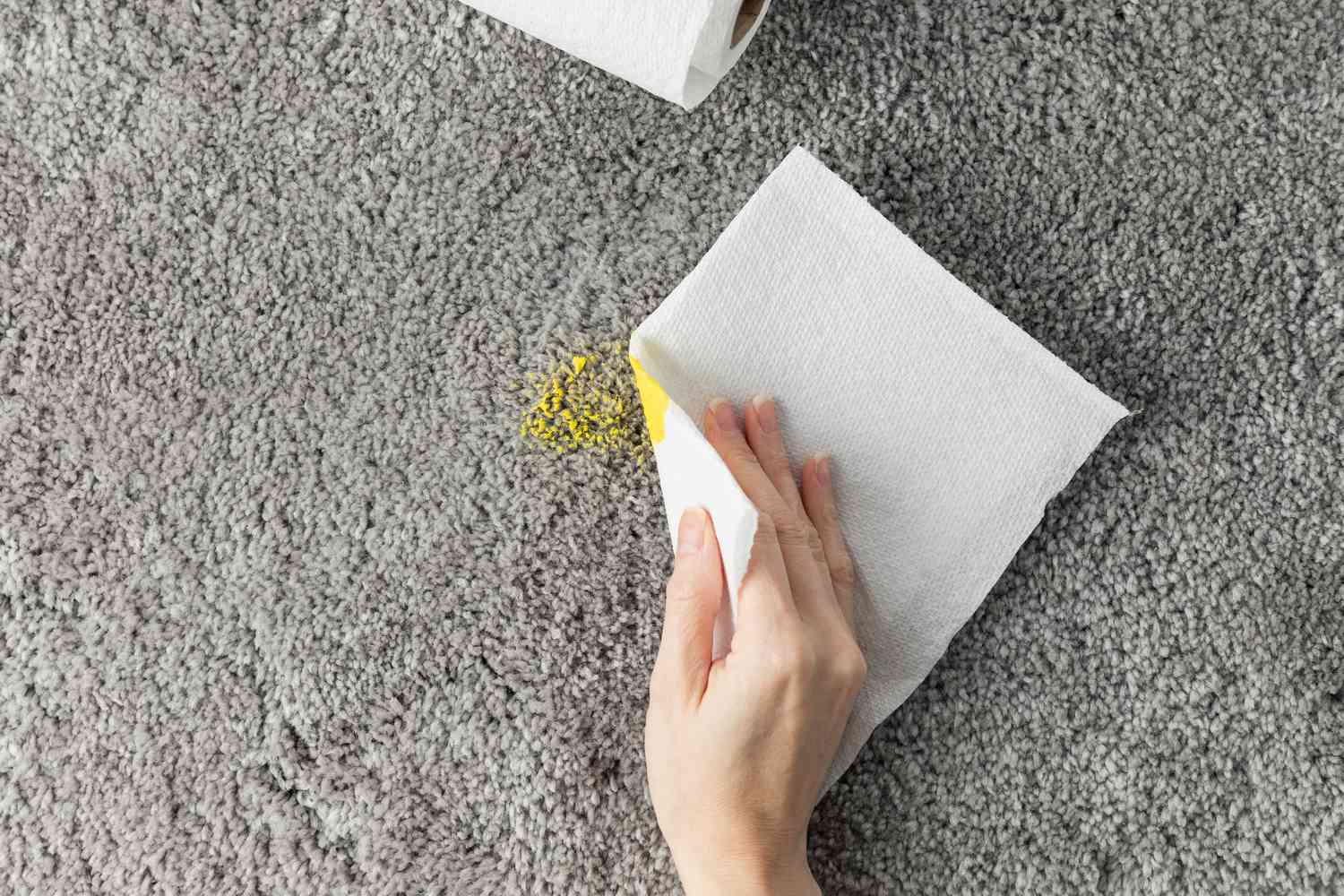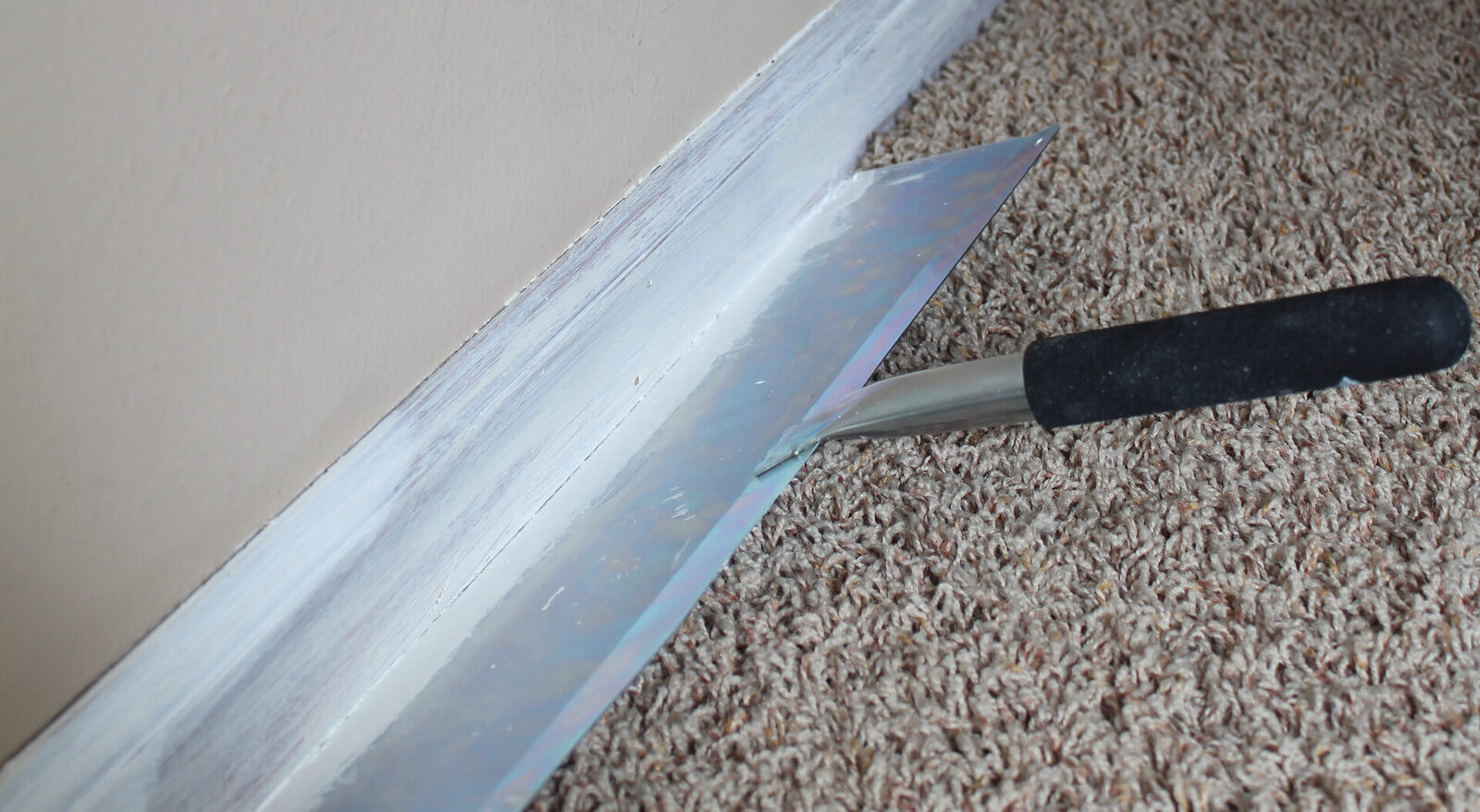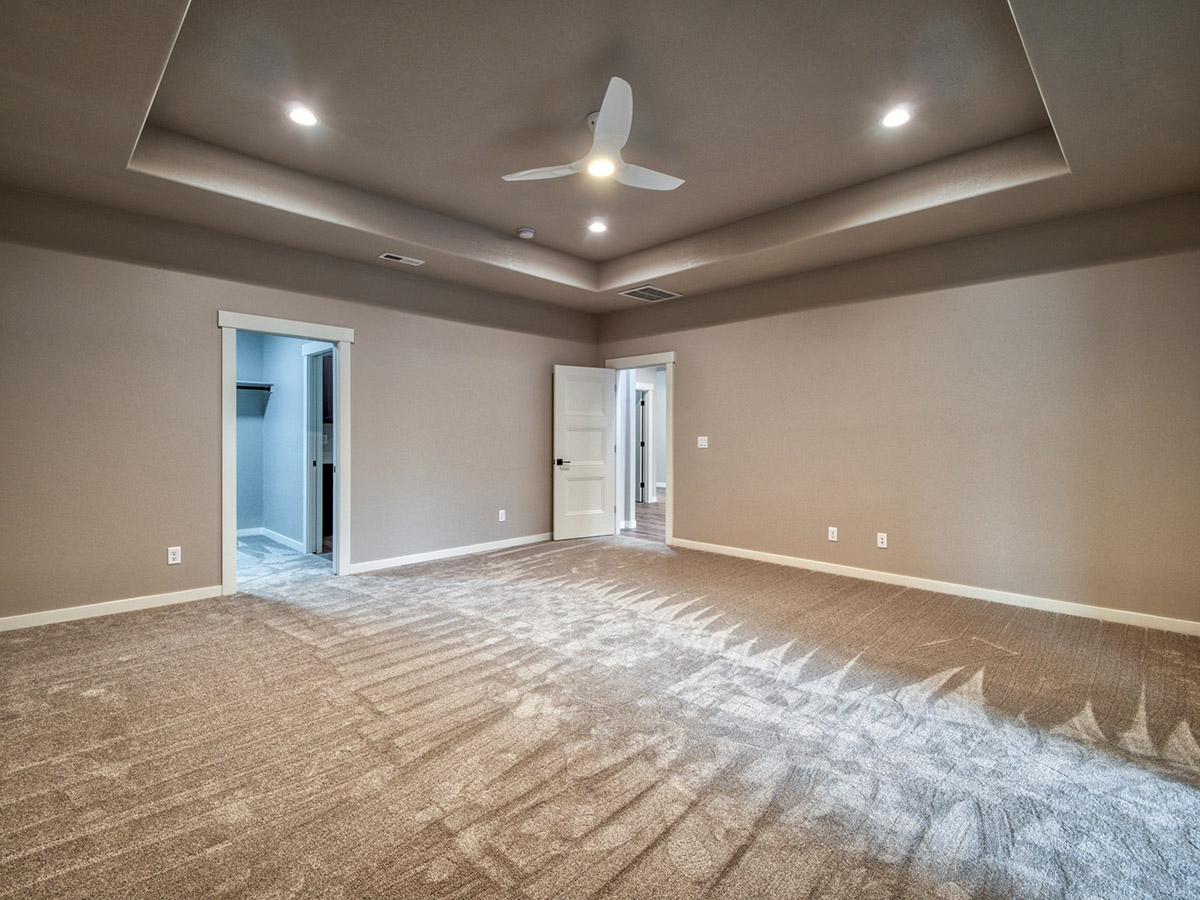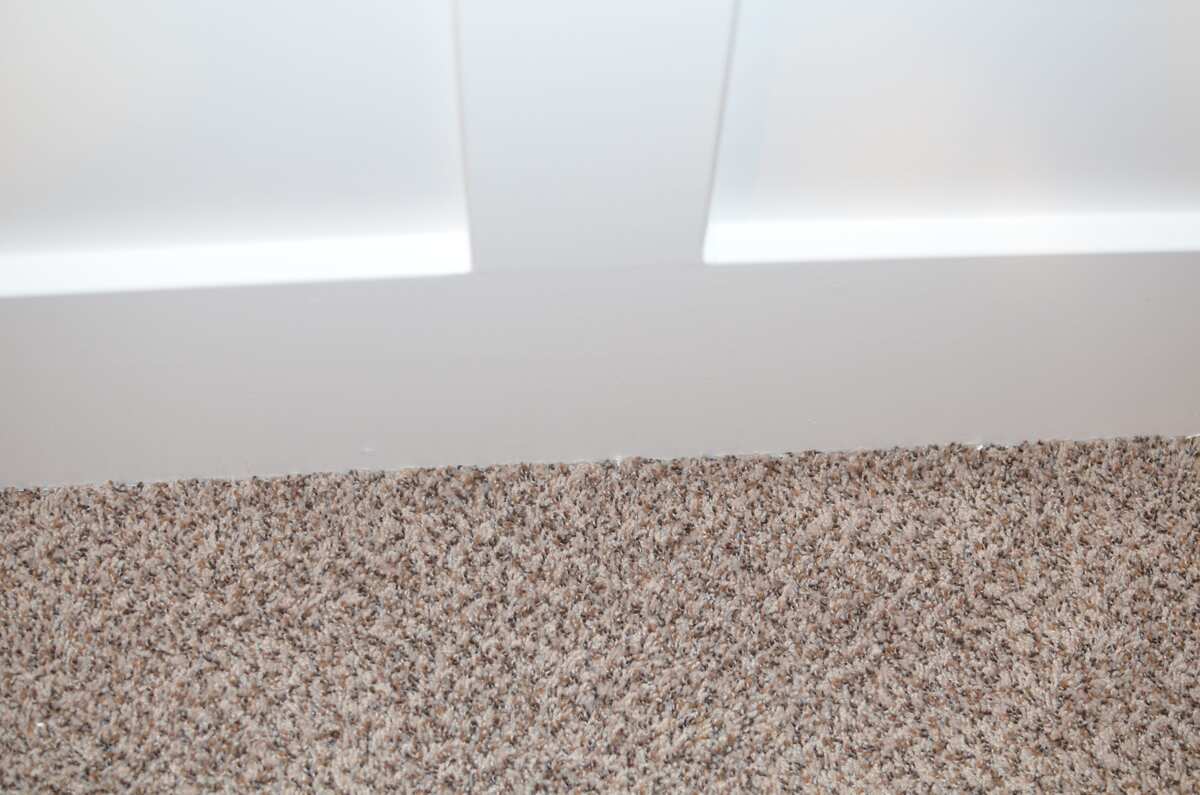

Articles
How To Paint Baseboards With Carpet
Modified: February 23, 2024
Learn how to paint baseboards with carpet in this comprehensive articles. Get expert tips and tricks to achieve a flawless finish.
(Many of the links in this article redirect to a specific reviewed product. Your purchase of these products through affiliate links helps to generate commission for Storables.com, at no extra cost. Learn more)
Introduction
Welcome to the world of DIY home improvement! If you’re looking to give your baseboards a fresh, new look but are worried about damaging your carpet in the process, you’ve come to the right place. With a little bit of planning and the right techniques, painting your baseboards with carpet can be a straightforward and rewarding project.
In this article, we will guide you through the steps to safely and effectively paint your baseboards while protecting your carpet. We will cover everything from preparing the baseboards and choosing the right paint to applying it flawlessly and cleaning up any mess. So, let’s dive in and get started!
Key Takeaways:
- Protect your carpet while painting baseboards by using plastic sheeting, drop cloths, and old newspapers. Work in small sections and be cautious with the paintbrush to avoid accidental spills or drips.
- Achieve a professional finish by choosing the right paint, applying it with care, and thoroughly inspecting for imperfections. Properly clean up the area and admire your newly painted baseboards to enhance your space.
Supplies Needed
Before you begin painting your baseboards with carpet, it’s essential to gather the necessary supplies. Having everything ready and within reach will make the process smoother and more efficient. Here’s a list of supplies you’ll need:
- Painter’s tape
- Plastic sheeting or drop cloths
- Old newspapers or cardboard
- Paintbrushes (angled brush and small detail brush)
- Roller brush and tray
- Primer
- Paint in your desired color (latex or oil-based)
- Paint thinner (if using oil-based paint)
- Rags or paper towels
- Paint can opener
- Sandpaper or a sanding block
- Dust mask or respirator
- Gloves
- Bucket of water and mild detergent
Make sure to have all these supplies ready before you start the project. It’s also a good idea to wear old clothes or a painting smock to protect yourself from accidental spills. Now that you have everything ready, let’s move on to preparing the baseboards.
Preparing the Baseboards
Proper preparation is key to achieving a professional-looking finish when painting your baseboards. Follow these steps to ensure your baseboards are ready for a fresh coat of paint:
- Clean the baseboards: Use a damp cloth or sponge to remove any dust, dirt, or grime from the surface of the baseboards. If there are stubborn stains or grease, you may need to use a mild detergent solution. Allow the baseboards to dry completely before proceeding to the next step.
- Sand the baseboards: Lightly sand the surface of the baseboards to create a rough texture. This will help the primer and paint adhere better. Use sandpaper or a sanding block and work in the direction of the grain. Be sure to wear a dust mask or respirator to protect yourself from the fine particles produced during sanding.
- Fill any gaps or holes: Inspect the baseboards for any gaps, cracks, or holes. Use a wood filler or putty to fill in these imperfections. Smooth out the filler with a putty knife and allow it to dry according to the manufacturer’s instructions. Once dry, sand the filled areas to remove any excess filler.
- Remove old paint: If your baseboards have peeling or chipping paint, it’s best to remove it before applying a fresh coat. Use a paint scraper or a putty knife to carefully scrape away the old paint. Be gentle to avoid damaging the baseboards or the underlying surface.
- Protect adjacent surfaces: Use painter’s tape to mask off any areas adjacent to the baseboards that you want to protect from paint splatters, such as the carpet or the walls. Be sure to press the tape firmly to ensure a clean paint line.
Once you’ve completed these steps, your baseboards will be primed and ready for the next stage – protecting the carpet.
Protecting the Carpet
When painting baseboards with carpet, it’s crucial to take precautions to prevent any accidental paint spills or drips. Here are some steps you can follow to protect your carpet:
- Lay down plastic sheeting or drop cloths: Cover the carpet adjacent to the baseboards with plastic sheeting or drop cloths. This will create a protective barrier and catch any paint that may accidentally splatter or drip.
- Secure the plastic sheeting or drop cloths: Use painter’s tape to secure the edges of the plastic sheeting or drop cloths to the baseboards or the floor. This will prevent them from shifting or moving during the painting process.
- Position old newspapers or cardboard: Place old newspapers or pieces of cardboard on top of the plastic sheeting or drop cloths directly beneath the baseboards. This additional layer will provide extra protection against any potential paint drips.
- Work in small sections: Paint the baseboards in small sections at a time, approximately 2-3 feet in length. This will help you maintain control and reduce the risk of accidentally touching the carpet with the paintbrush or roller.
- Be cautious with the paintbrush or roller: When applying paint near the edge of the baseboards, hold the brush or roller at a slight angle to avoid any contact with the carpet. Take your time and be mindful of your movements to minimize the chances of paint getting on the carpet.
- Clean up spills immediately: If any paint does accidentally get on the carpet, it’s important to act quickly. Use a damp cloth or paper towel to blot the paint gently, being careful not to spread it further. Avoid rubbing the paint, as this can push it deeper into the carpet fibers.
By following these steps, you can safeguard your carpet and ensure that the painting process goes smoothly. Now that you’ve protected your carpet, it’s time to choose the right paint for your baseboards.
Use painter’s tape to protect the carpet from paint. Use a small angled brush to carefully paint the baseboards, being mindful of the carpet. Wipe up any spills immediately.
Choosing the Right Paint
When it comes to painting baseboards with carpet, selecting the right paint is essential for a successful and long-lasting finish. Here are some factors to consider when choosing the paint:
- Type of paint: There are two main types of paint to choose from: latex/acrylic paint and oil-based paint. Latex paint is water-based, dries quickly, and is easy to clean up with water. Oil-based paint, on the other hand, provides a more durable and smoother finish, but it requires paint thinner for cleanup. Consider your preference and the specific needs of your baseboards when deciding between the two.
- Finish: The finish refers to the sheen or glossiness of the paint. Common options include flat, satin, semi-gloss, and high-gloss finishes. For baseboards, a semi-gloss or high-gloss finish is recommended as they are more resistant to scuffs and easier to clean.
- Color: Choose a color that complements your room’s overall aesthetic and matches your desired style. Many homeowners opt for a white or off-white color for their baseboards, as it provides a clean and timeless look. However, feel free to get creative and consider other colors that harmonize with your existing decor.
- Quality: Invest in a good-quality paint to ensure a smooth application and long-lasting finish. Higher-quality paints tend to have better coverage, hide imperfections well, and require fewer coats. Look for reputable brands and read reviews to determine the quality of the paint.
It’s also a good idea to consult with a paint specialist at your local hardware store. They can provide additional guidance based on your specific needs and help you make an informed decision. Once you’ve chosen the right paint, it’s time to move on to the next step – applying the paint to your baseboards.
Read more: How To Replace Baseboards With Carpet
Applying the Paint
Now comes the fun part – applying the paint to your baseboards. Follow these steps to achieve a smooth and even finish:
- Primer: If your baseboards are bare wood or have a dark color, it’s a good idea to apply a primer first. This will create a smooth surface and help the paint adhere better. Use a brush or roller to apply a thin and even coat of primer. Allow it to dry according to the manufacturer’s instructions.
- Stir the paint: Open the can of paint and use a paint stick to stir it thoroughly. This will ensure that the color is evenly distributed and any settling is mixed back into the paint.
- Paint the baseboards: Dip your brush or roller into the paint, removing any excess by tapping it on the side of the paint can or tray. Starting at one end of the baseboard, apply the paint in smooth and even strokes, following the natural direction of the baseboard grain. Work in sections, overlapping slightly to create a seamless finish.
- Smooth out any brush marks: If you’re using a brush, lightly run a dry brush over the painted surface to smooth out any visible brush marks. This technique, known as “laying off,” helps achieve a more professional and finished appearance.
- Allow the paint to dry: Follow the drying time mentioned on the paint can. It’s important not to rush the process to avoid smudging or ruining the finish. Keep the room well-ventilated to help the paint dry faster.
- Apply additional coats: Depending on the paint’s coverage and the desired opacity, you may need to apply multiple coats. Allow each coat to dry completely before applying the next. Remember to lightly sand the baseboards between coats for a smoother finish.
With these steps, you’ll be able to paint your baseboards with precision and achieve a beautiful finish. Once you’ve completed all the necessary coats and allowed the paint to dry thoroughly, it’s time to move on to touching up any imperfections and cleaning up the area.
Touching Up and Cleaning Up
After painting your baseboards, it’s important to inspect them for any imperfections or areas that may require touching up. Here’s what you need to do:
- Inspect for uneven coverage: Take a close look at your painted baseboards to ensure an even and consistent coverage. If you notice any thin or bare spots, apply additional coats of paint to achieve a uniform finish.
- Address drips or smudges: If you come across any paint drips or smudges on the baseboards or adjacent surfaces, use a damp cloth or paper towel to gently wipe them away. For stubborn spots, you may need to use mild soap and water, being careful not to damage the painted surface.
- Remove painter’s tape: Once the paint has dried, carefully remove the painter’s tape from the walls or adjacent surfaces. Peel it back at a 45-degree angle to ensure a clean and crisp paint line. If any paint has bled through, gently scrape it off with a putty knife.
- Clean your brushes and rollers: If you plan to reuse your brushes and rollers, it’s essential to clean them thoroughly to maintain their quality and prolong their lifespan. For latex paint, rinse the brushes and rollers with warm soapy water until the water runs clear. For oil-based paint, use paint thinner to clean them.
- Dispose of the plastic sheeting and drop cloths: Carefully gather the plastic sheeting or drop cloths used to protect your carpet and dispose of them properly. Fold or roll them up to contain any paint drips and prevent them from spreading.
- Inspect and admire your newly painted baseboards: Step back and admire your handiwork! Take a moment to appreciate the refreshed look of your baseboards and how they enhance the overall aesthetics of your space.
By thoroughly touching up any imperfections and cleaning up the area, you can ensure a professional-looking finish and maintain the cleanliness of your space. Now that you’ve completed the final steps, it’s time to conclude the painting project.
Conclusion
Congratulations on successfully painting your baseboards with carpet! By following the steps outlined in this article, you have transformed the look of your baseboards while protecting your carpet from any accidental paint spills or drips. This DIY project not only adds a fresh touch to your space but also allows you to showcase your creativity and attention to detail.
Remember, proper preparation, including cleaning, sanding, and filling any gaps, is crucial for achieving a smooth and professional finish. Protecting your carpet with plastic sheeting and drop cloths, as well as working in small sections, reduces the risk of accidental paint damage. Choosing the right paint, whether latex or oil-based, and applying it correctly with brushes and rollers, ensures a durable and visually appealing result.
Once the painting is complete, don’t forget to thoroughly inspect your work and address any touch-ups that may be necessary. Cleaning up any paint drips or smudges, removing painter’s tape carefully, and properly cleaning your brushes and rollers will leave you with a clean and tidy workspace.
Now sit back, relax, and enjoy the results of your hard work. Your newly painted baseboards will enhance the overall aesthetic of your space and leave a lasting impression on anyone who visits. Whether you’ve chosen a classic white or ventured into more daring color choices, your baseboards will now be a standout feature in your home.
Thank you for joining us on this journey of painting baseboards with carpet. We hope you found this article informative and helpful in your DIY painting project. Happy painting!
Frequently Asked Questions about How To Paint Baseboards With Carpet
Was this page helpful?
At Storables.com, we guarantee accurate and reliable information. Our content, validated by Expert Board Contributors, is crafted following stringent Editorial Policies. We're committed to providing you with well-researched, expert-backed insights for all your informational needs.
